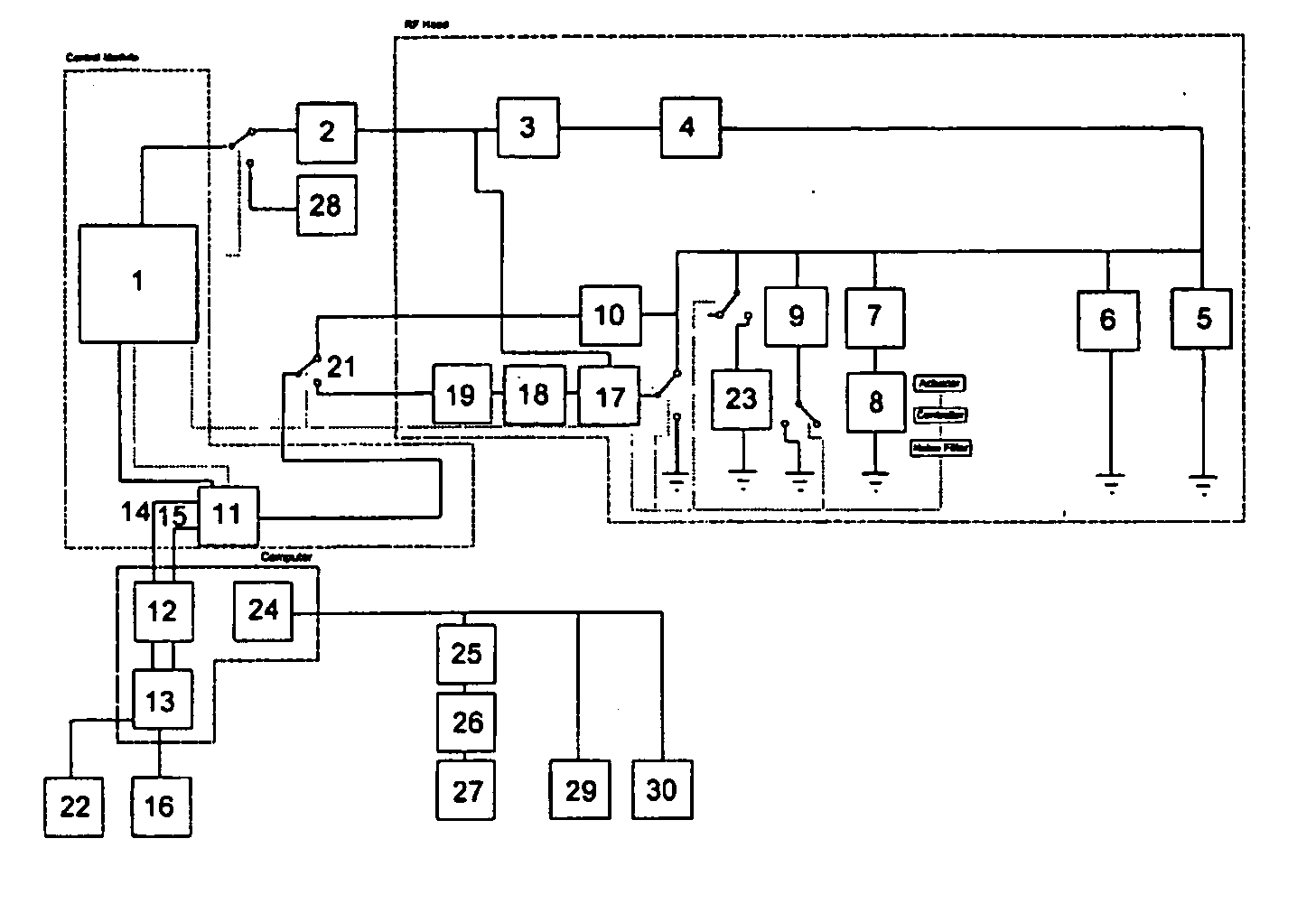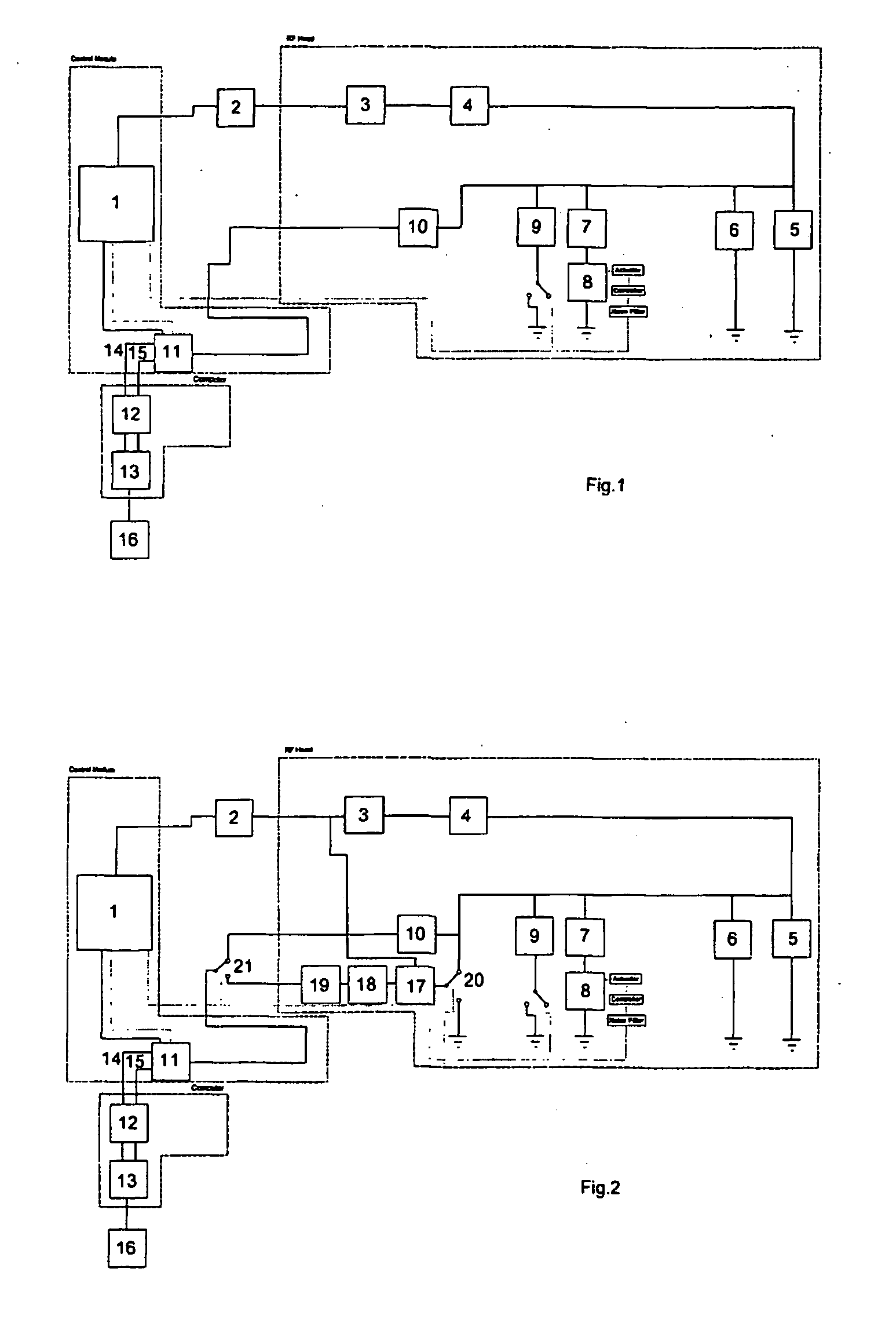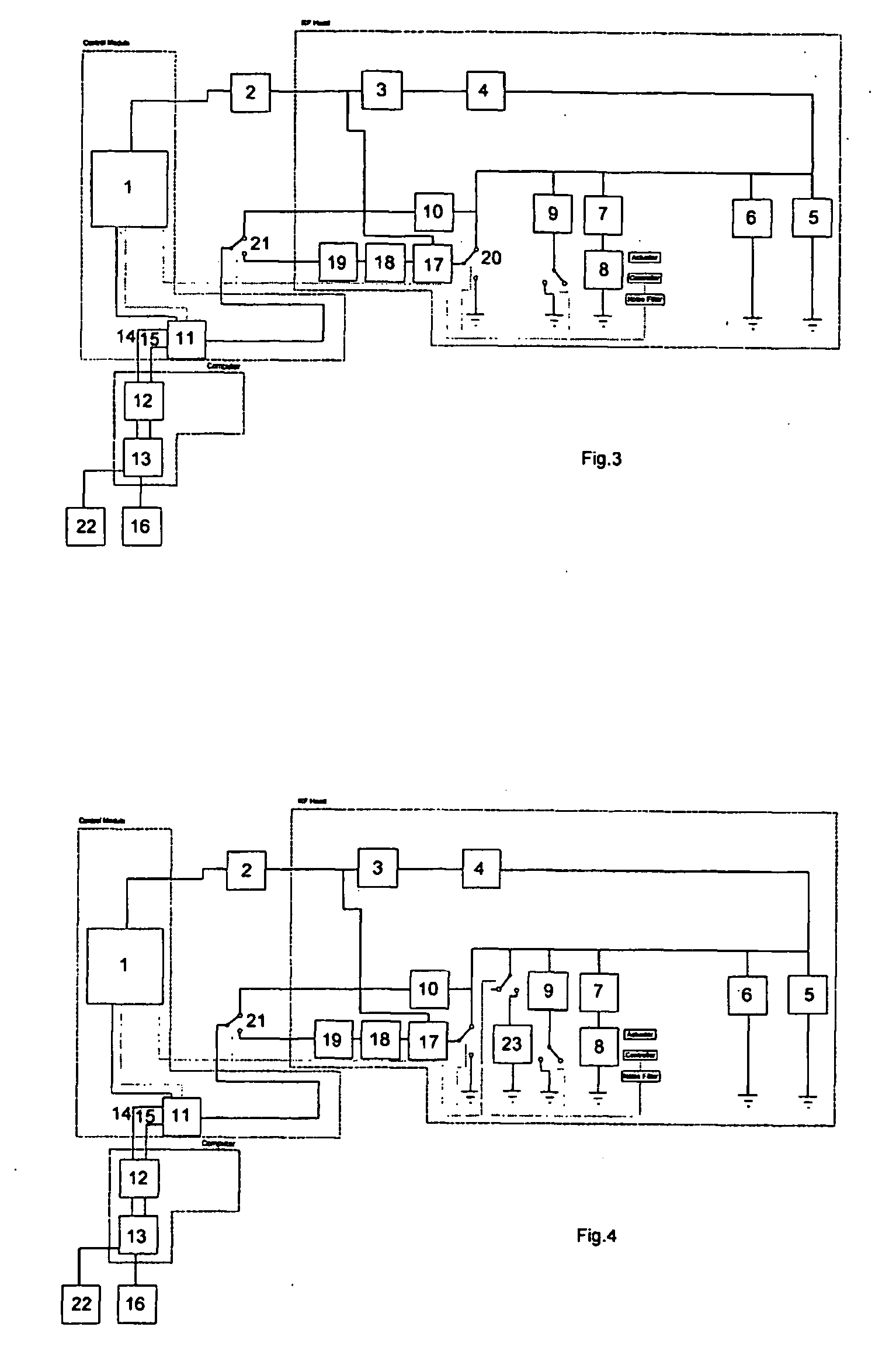Scanner for nuclear quadrupole resonance measurements and method therefor
a nuclear quadrupole resonance and scanning machine technology, applied in the direction of reradiation, measurement using nmr, instruments, etc., can solve the problems of difficult to achieve, difficult to resonate at high nqr frequency, spiral coils cannot be used for large volume applications, etc., to prevent the escape of rf interference, the effect of combating magnetoacoustic ringing and temperature-induced intensity anomaly effects
- Summary
- Abstract
- Description
- Claims
- Application Information
AI Technical Summary
Benefits of technology
Problems solved by technology
Method used
Image
Examples
first embodiment
[0096] the best mode is directed towards an NOR scanner, and comprises specific elements described below.
[0097] Reference is made to FIG. 1 which is a block diagram of the entire NOR system.
[0098] A pulse generating means in the form of a Pulse Generator Controller (PGC) 1 generates an oscillating signal at the frequency of interest and converts it into a pulse sequence suitable for irradiating an object disposed within a coil 5 with RF energy and detecting NOR signals that may be excited within a substance contained within the object. Within the PGC 1 a direct digital synthesizer (DDS) generates a sinusoidal wave close to the NOR frequency of interest, which is typically between 0.5-6 MHz in frequency. This signal is gated by the rest of the PGC 1 to produce pulses of signal which are around a few hundred microseconds long and are spaced a similar amount apart. The DDS can also be configured to change phase, such that pulse sequences which require phase changes can be achieved.
[0...
second embodiment
[0111] The second embodiment is substantially the same as the first, except that the coil 5 used is a single turn sheet coil (FIG. 10). The single turn sheet coil has a high Q, substantially uniform magnetic field and the electric field is confined to a small area away from the coil similar to the multi loop coil.
[0112] The third embodiment (FIG. 2) is substantially the same as the first or second embodiments, except that the amplification of the small return signal emanating from the coil is achieved by using two different amplifiers. The first amplifier is used for amplification of low frequency NQR signals and comprises a cold damped amplifier consisting of an isolator 17, a matching section 18 and an amplifier 19. The second amplifier is used for amplification of high frequency NQR signals and consists of a high impedance amplifier 10. The matching section ensures maximum transfer efficiency of the signal. The use of two different amplifiers for each different frequency range ha...
eighth embodiment
[0120] The eighth embodiment is substantially the same as the first to the seventh except that the pulse sequences used combat both magnetoacoustic ringing from the sample being scanned and temperature effects caused by the temperature anomaly effect in NQR. Nearly all items scanned exhibit some degree of magnetoacoustic ringing due to metal content on the items being scanned. Therefore a practical scanner needs to use only magnetoacoustic pulse sequences to overcome this problem. The temperature anomaly effect occurs when the signal intensity received at various offsets from the resonance frequency reduces in a cyclical fashion. Some pulse sequences however can overcome this effect by producing a constant intensity regardless of the offset from the resonance frequency. For a practical NQR scanner it therefore is necessary to use a pulse sequence which overcomes magnetoacoustic ringing and the temperature induced intensity anomaly effect.
PUM
 Login to View More
Login to View More Abstract
Description
Claims
Application Information
 Login to View More
Login to View More - R&D
- Intellectual Property
- Life Sciences
- Materials
- Tech Scout
- Unparalleled Data Quality
- Higher Quality Content
- 60% Fewer Hallucinations
Browse by: Latest US Patents, China's latest patents, Technical Efficacy Thesaurus, Application Domain, Technology Topic, Popular Technical Reports.
© 2025 PatSnap. All rights reserved.Legal|Privacy policy|Modern Slavery Act Transparency Statement|Sitemap|About US| Contact US: help@patsnap.com



